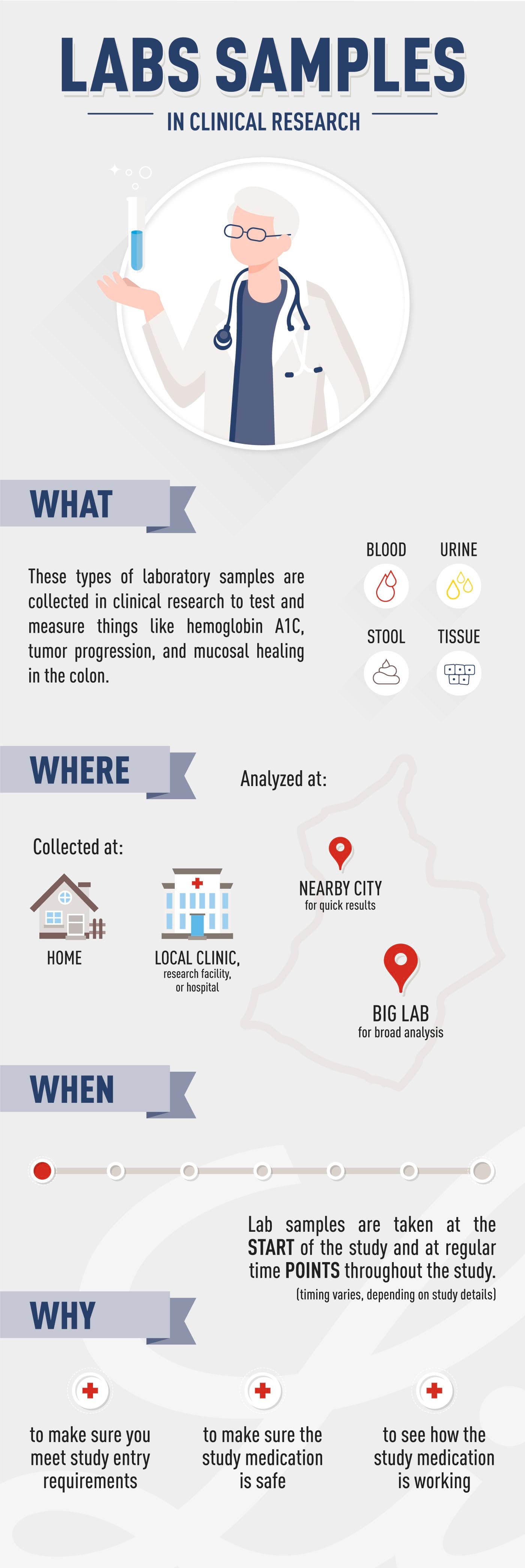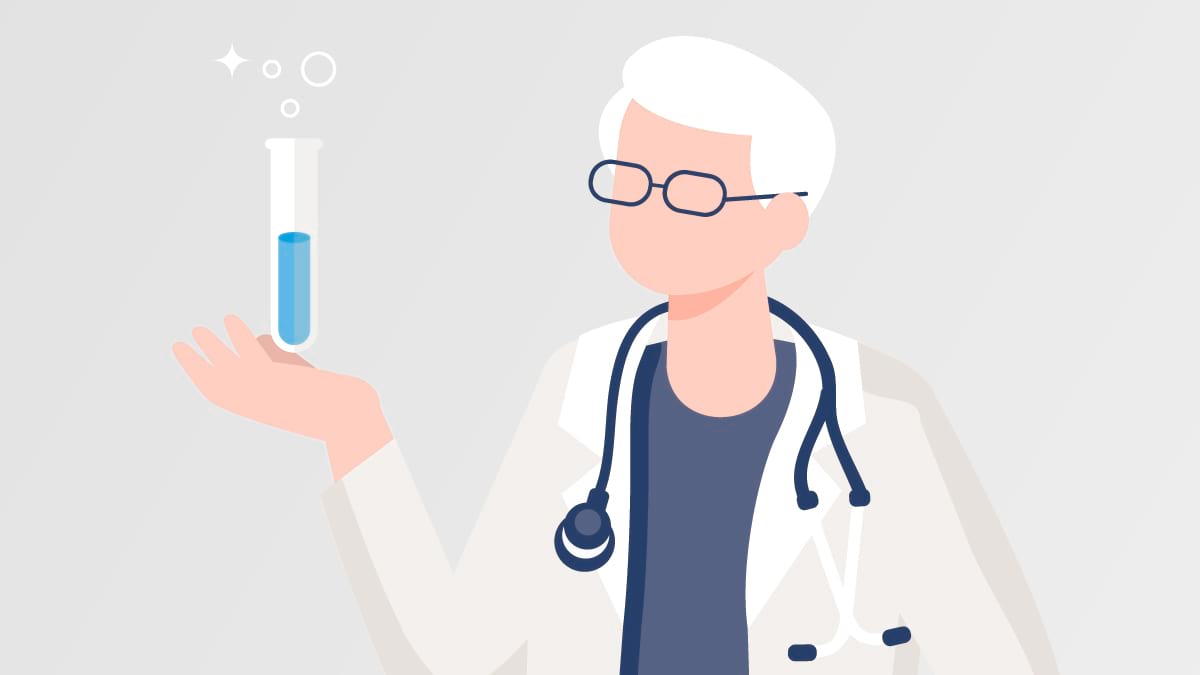Most of us are familiar with going to the doctor for a routine visit and having a blood sample taken to check our health. Depending on your age and health status, you may also know what it’s like to give samples of urine or even stool for analysis. Or you may have a health condition that is assessed by giving tissue samples (e.g. tumor biopsies for certain types of cancer).
Some of these lab samples are easier to give than others, and some are easier to check than others. So why are people asked to give lab samples? What kinds of things are learned from looking at lab results?
The Role of Lab Samples in Clinical Research
In clinical research, the number of, and how often lab samples are taken, can be much higher than in routine care. This is true for many reasons:
Research staff need to make sure that your health status matches the entry requirements for the clinical research study.
For women who may be able to have children, researchers check to make sure you have not gotten pregnant during the study. This is usually done by asking the person to collect a urine sample. In many cases, we don’t know yet what effect the study medicine may have on the baby, and we want to avoid any risk. So, researchers usually require that both men and women minimize the chance of pregnancy.
Researchers want to be certain the study medicine is safe and that you are not experiencing ill effects from taking it.
We need to check how the study medicine is working in your body and compare your results with those of other research participants from all over the world.
Research staff want to see if the study medicine works better in people with certain types of biomarkers.
Example: Lab Samples in Diabetes Clinical Trials
Blood samples are the most common type of lab sample used in diabetes clinical research studies. Blood samples are taken at the start of the trial to confirm if a participant meets study entry requirements. Blood samples are also taken throughout a study to monitor a participant’s health or response to a study medicine. All blood results are monitored and reviewed by a study doctor or nurse. Blood tests to check blood glucose levels are common in diabetes clinical research. Researchers take blood samples from a vein in the arm. Below are some common blood tests that may be taken in clinical trials for diabetes.
Blood glucose tests are used to measure how much sugar is in the blood. Blood glucose levels are also known as blood sugar levels.
Fasting blood glucose tests measure the average blood sugar level in the body after fasting. If you are asked to fast for a blood glucose test, you should not eat or drink for at least 8 hours before the test.
HbA1c test is used to measure a person’s average blood sugar level over the last 2 or 3 months.
Oral glucose tolerance test is used to measure the body’s response to sugar. This test measures blood sugar levels before and after drinking a sugary drink. A blood sample is taken before the drink, and then at intervals after the drink.
Research/biobank samples: You may be asked to provide additional blood samples during a research study for future research. These samples are used to learn more about diabetes and to potentially improve treatments for the disease.
Blood sugar levels can be checked by doing a finger prick test. Blood from the finger is placed on a test strip that is inserted into a blood glucose monitor. This test gives an immediate result. It can be checked several times a day to monitor blood sugar levels.
Many people living with diabetes are using continuous glucose monitoring (CGM)/flash glucose monitors to test blood glucose levels. The benefit of these monitors is that glucose levels can be monitored continuously without a needle. The study team will review and record blood glucose levels throughout the study and may ask participants to keep a record of results by using paper or electronic diaries.
Summary
The information gathered from the testing of lab samples is some of the most important knowledge we gain in clinical research. Clinical trial participants need to contribute the required lab samples at different time points during a study.
The lab data collection process is a key point of discussion in our CoDESIGN sessions. In these sessions, patients and clinical research site staff help to make sure we are collecting only lab samples needed for the research. And that we are making it as easy as possible to collect these samples.
It is important that research sponsors like Lilly carefully define the lab requirements that answer the research questions. Think about times in the past where you have had to give a blood sample. Sometimes, the lab technician just needs to fill two vials, but sometimes there is a pile of tubes to fill! For every study we sponsor, we try to avoid the “pile of tubes” scenario to minimize the impact on you. In some cases, lab samples can even be collected at home (for example, a 24-hour urine collection). In these studies, the supplies and instructions would be provided to you.
Now that you know the basics about the role of lab samples in clinical trials, we’re breaking down the key takeaways in the infographic below. Take a look and let us know on Twitter what other research lab-related questions are on your mind.

Are you or a loved one interested in participating in a clinical trial? Check out Lilly’s enrolling trials here.

